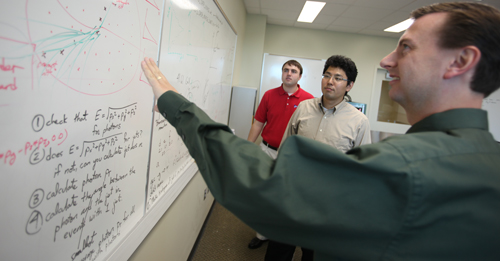Baylor researchers play a part in Nobel Prize-winning discovery

Even if the words “Nobel Prize” is the only familiar phrase in this article, you’re bound to be impressed by the work of two Baylor physics professors and their students.
Since 2010, Baylor has been involved in “high-energy research” with the European Organization for Nuclear Research (CERN) that led to a major scientific breakthrough — and a major honor. Dr. Peter Higgs and Dr. Francois Englert were awarded the Nobel Prize in physics earlier this month for proving the existence of the Higgs boson particle. Research conducted here at Baylor aided them in their achievement.
Scientists have been pursuing the Higgs boson since the 1960s, when Dr. Higgs first theorized that it could exist. The breakthrough discovery explains why particles have mass, but scientists had not actually been able to observe the boson until now, filling a major gap in the Standard Model of physics. Dr. Jay Dittman, associate physics professor, and Dr. Kenichi Hatakeyama, assistant physics professor, lead the High Energy Physics group at Baylor, which has contributed to research on the Higgs boson particle since 2010. Under the two professors’ guidance, Baylor graduate and undergraduate students conducted experiments and analyzed data that enhanced the research.
Among Baylor’s contributions, researchers helped improve the measurement of “missing transverse energy” and worked with data and software related to the hadron calorimeter. Dittman and Hatakeyama also conducted experiments with the Compact Muon Solenoid, a particle physics detector.
Sic ’em, Baylor researchers!

